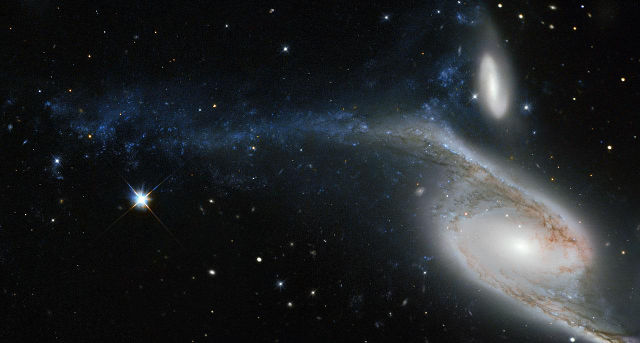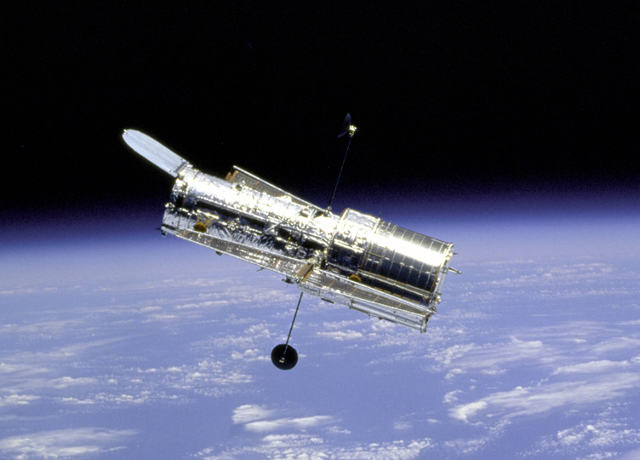The Hubble Space telescope has been one of the most monumental human achievements and will celebrate its silver jubilee (25th anniversary) this week. Over these years, Hubble (thanks to some helpful repairs and upgrades) has provided us with an astounding amount of data and never previously discovered knowledge about our universe. Here’s wishing Hubble the very best on this momentous anniversary and looking forward to many more years of wonderful new images and discoveries about our Universe.
Tag Archives: hubble
Spiral galaxy NGC 6872

The Hubble Space Telescope has captured some astonishing views of the universe. This picture taken by its Wide Field Planetary Camera 2 is no slouch either, capturing a couple of galaxies in one shot. The main feature is the spiral galaxy NGC 6872 located about 300 million light-years away in the constellation of Pavo (The Peacock).
NGC 6872 is the second largest spiral galaxy discovered to date by humans. It spans over 500,000 light-years across, compared to the Milky way which is approximately 120,000 light years from end to end. This picture also captures the galaxy IC 4970 which can be seen causing a disruption in NGC 6872’s upper left spiral arm, as it transits through the larger spiral galaxy, helping it create new stars.
What is the Hubble Space Telescope?
Hubble Space Telescope (HST) is a telescope that has been placed in low Earth orbit, about 559 km above the Earth’s surface. Hubble was launched by space shuttle Discovery (STS-31) on April 24, 1990. Unfortunately Hubble was hampered by a flawed optical system until astronauts could make significant repairs in 1993.

The potential benefits of carrying out astronomical observations from space were first suggested in 1923, by the German rocket pioneer Hermann Oberth. NASA worked on several initiatives and conducted proof of concept studies in the 1960s and 1970s that formed the basis of the Hubble Space Telescope. By sitting high above Earth’s atmosphere, Hubble can avoid all the background light and distortions that exist for telescopes on even the most remote areas of Earth. As a result, Hubble has provided astronomers and scientists with some amazing high resolution images of our universe. This has given us invaluable insights into how the universe came about, with some deep views into space and time.
Cassini and Hubble reveal Saturn’s auroras
This NASA video provides a nice slideshow of ultraviolet and infrared images of auroras at Saturn’s north and south poles. The images were taken by the Cassini spacecraft which is exploring the Saturn system (Cassini is currently on the Solstice mission) and the Hubble Space Telescope. Saturn has long fascinated humans with many historic and religious references – a topic to be explored further in the future.